The introduction of block theory engineering analysis software
Block theoretical engineering analysis software KBTE-2.0
1. Main functional features and interface features of the software
(1) Full space polar projection and analysis: directly display the type of joint cone, the movement mode of joint cone, the stability coefficient and residual sliding force ignoring the cohesive force on the graph;
(2) Complex block shape analysis: no positioning block geometry analysis; Shape analysis of positioning blocks including concave blocks;
(3) Block stability and support force analysis: considering the effects of groundwater, earthquake, external load, etc., block stability coefficient calculation, block support force analysis; Stability analysis of multi-slip surface blocks and complex blocks;
(4) Analysis of the largest mass shape of underground cavern;
(5) Equilibrium region diagram (Londe diagram);
(6) three-dimensional structural plane network simulation considering positioning and random structural plane; Three-dimensional random block geometry search for cavern and slope problems; Statistical analysis of block geometric characteristics (size, average size, buried depth and coverage rate, etc.);
(7) three-dimensional block cutting analysis of slope and cavern rock mass (full space block search), and progressive block instability analysis;
(8) Block reliability analysis considering the random distribution of structural plane mechanical parameters and geometric parameters; Block occurrence probability and block failure probability analysis

图1.1-2 软件主界面
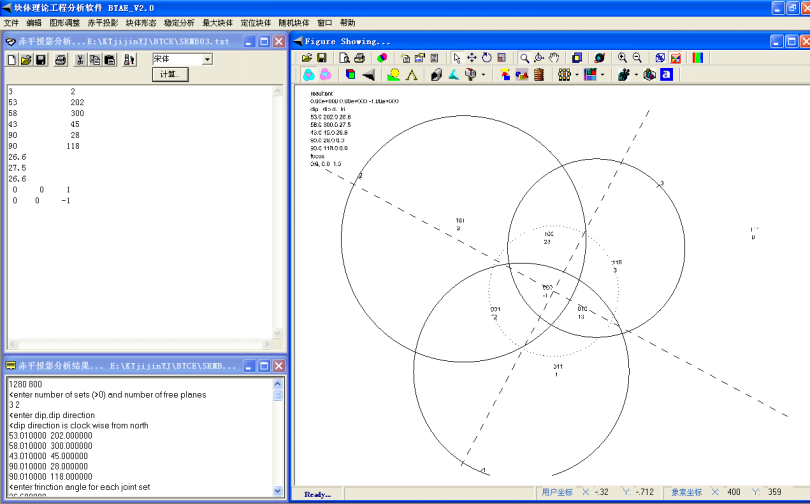
图1.1-4全空间赤平投影分析
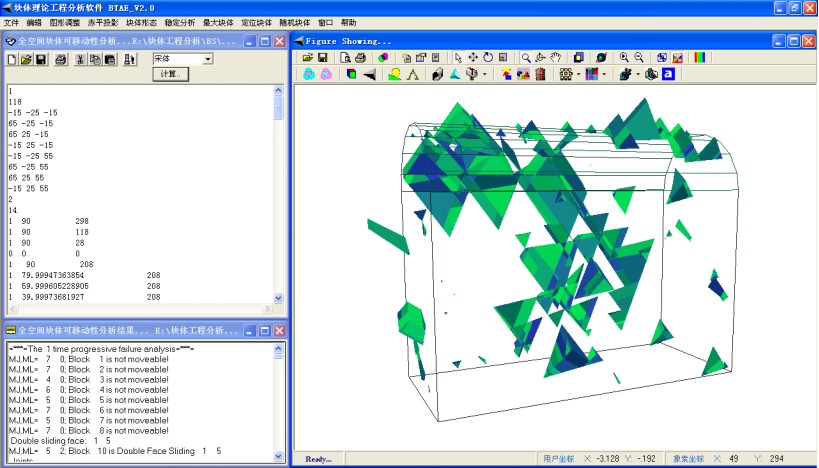
图1.1-8 洞室内块体系统渐进失稳分析结果
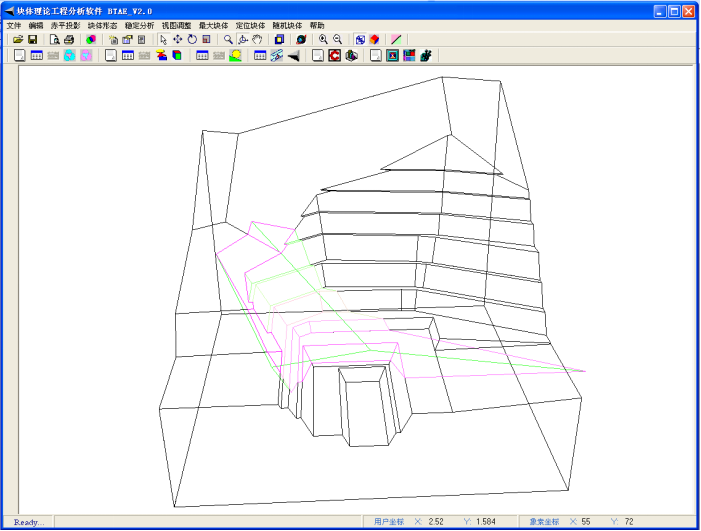
图2.7-1 边坡的定位块体
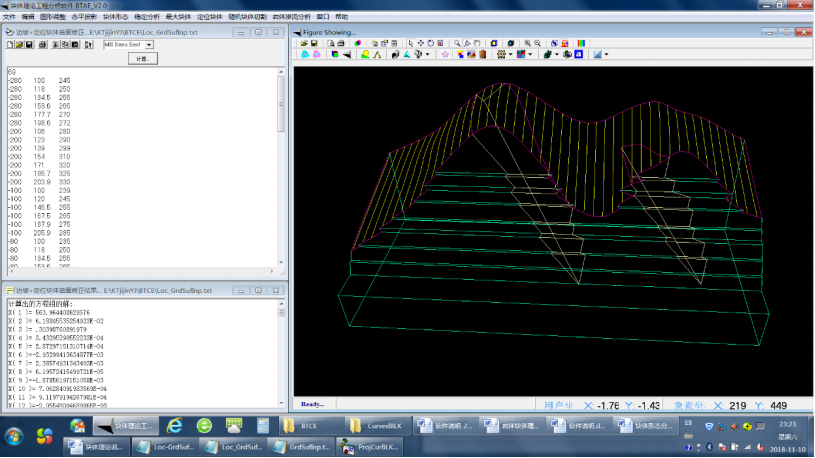
图2.7-3 曲面修正后的定位块体
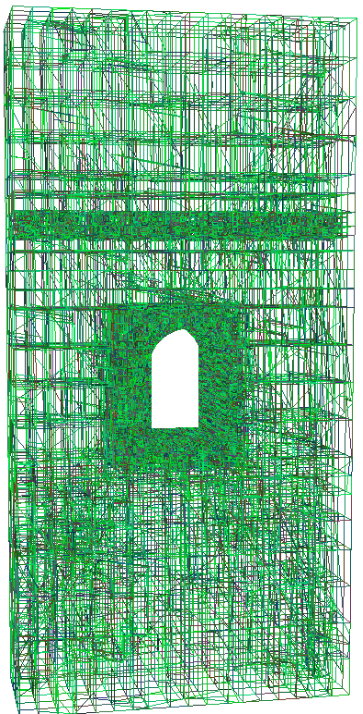
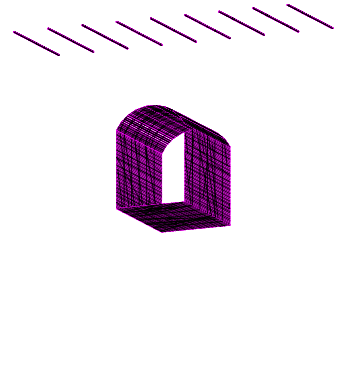
(a)三维块体 (b)洞室和排水孔边界
图2.9-4 水封洞库模型
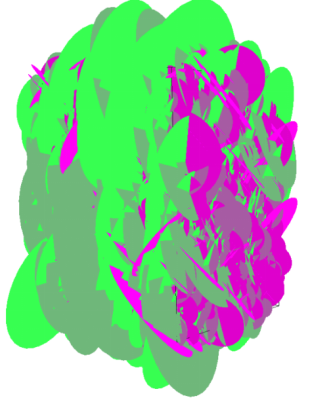
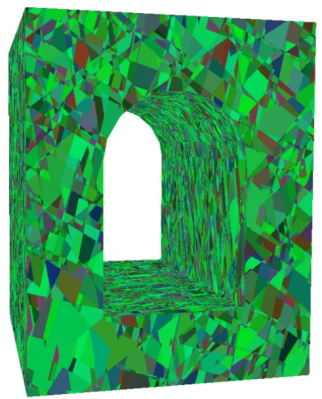
(a)结构面网络 (b)三维块体
图2.9-5洞室围岩三维切割分析
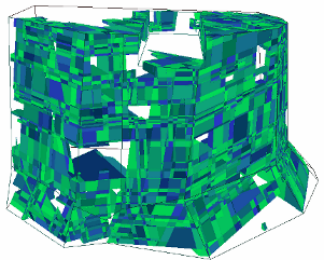
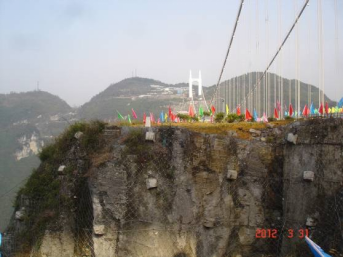
图2.9-9 三维块体切割分析在矮寨大桥桥台边坡支护分析中的应用
(a) (b) (c)
(a)结构面摩擦系数取0.5,得到942个失稳块体;(b)结构面摩擦系数取1.0,得到837个失稳块体;(c)结构面摩擦系数取1.5,得到445个失稳块体
图2.9-10 考虑力学识别后得到的渐进失稳关键块体
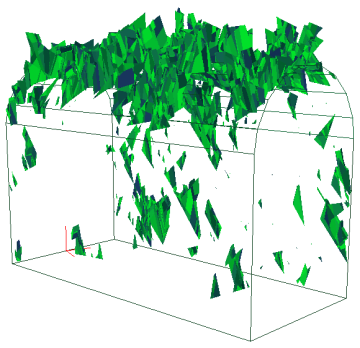
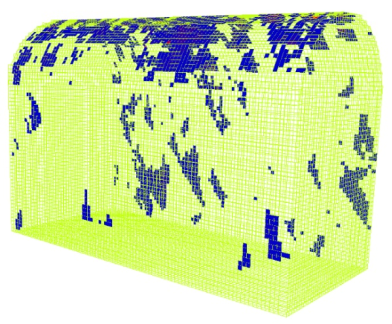
(a) (b)
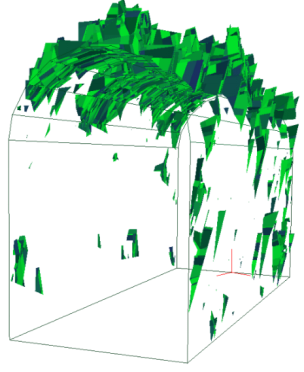
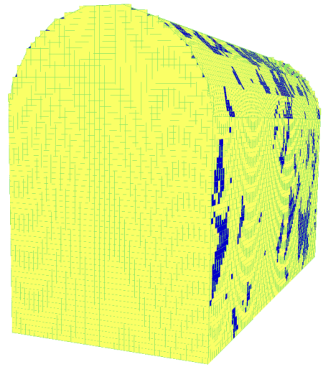
(c) (d)
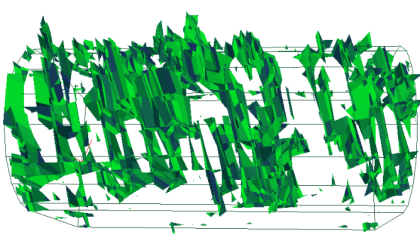
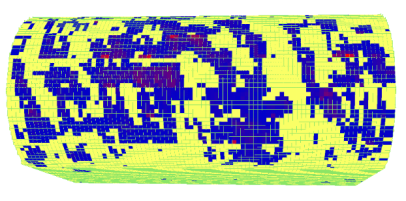
(e) (f)
图2.9-13 锚固力分布特征与渐进失稳块体位置对比

 Hotline
Hotline

